Before You Get a Teacup Maltipoo, Read This Guide
The Teacup Maltipoo is a pint-sized designer dog that has gained immense popularity among urban dwellers and pet lovers seeking a hypoallergenic, low-shedding, affectionate companion. This hybrid breed is a cross between a Teacup Maltese and a Teacup Poodle, both of which are known for their intelligence, charm, and devotion to humans.
But while their small size and teddy bear looks may be appealing, there’s much more to owning a Teacup Maltipoo than meets the eye. From health considerations and ethical concerns to grooming, training, and lifestyle needs — this comprehensive guide covers everything you need to know before bringing a Teacup Maltipoo into your home.
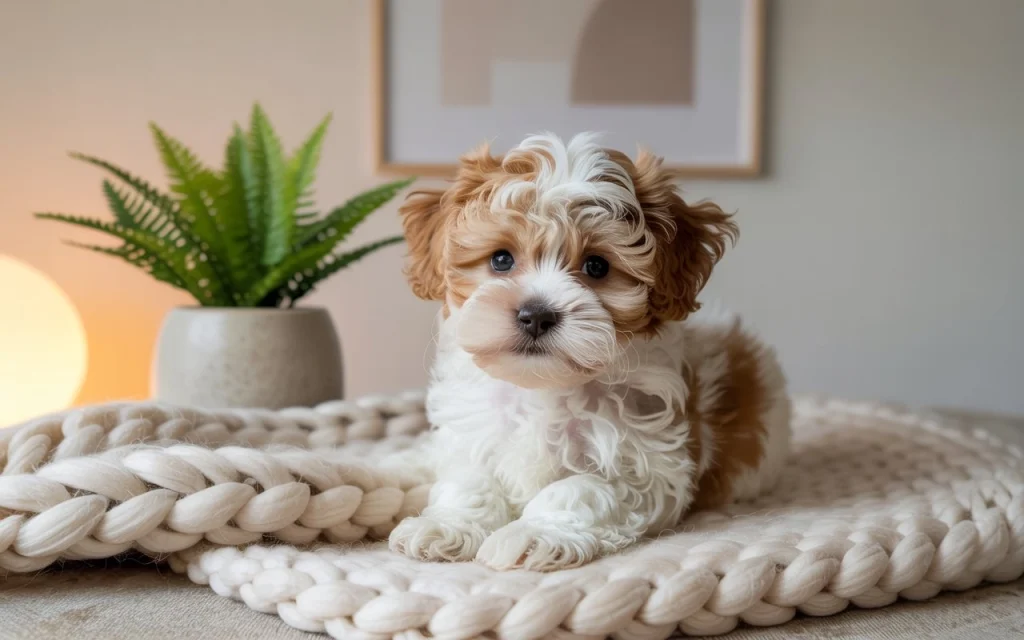
What is a Teacup Maltipoo?
A Teacup Maltipoo is not an officially recognized breed but rather a term used to describe an extra-small version of the Maltipoo, bred to weigh under 5 pounds as adults. Like all “teacup” or “micro” breeds, they are the result of selectively breeding the smallest individuals from each litter.
While they’re incredibly small and often marketed for their “cute factor,” their miniature size comes with significant responsibility and potential health risks.
Related: 5 Easiest Small Dogs to Housebreak
Breed Origin and History
The Maltipoo itself emerged in the United States as part of a trend to create designer dogs that combine the intelligence and hypoallergenic coats of Poodles with the affectionate nature of other companion breeds like the Maltese.
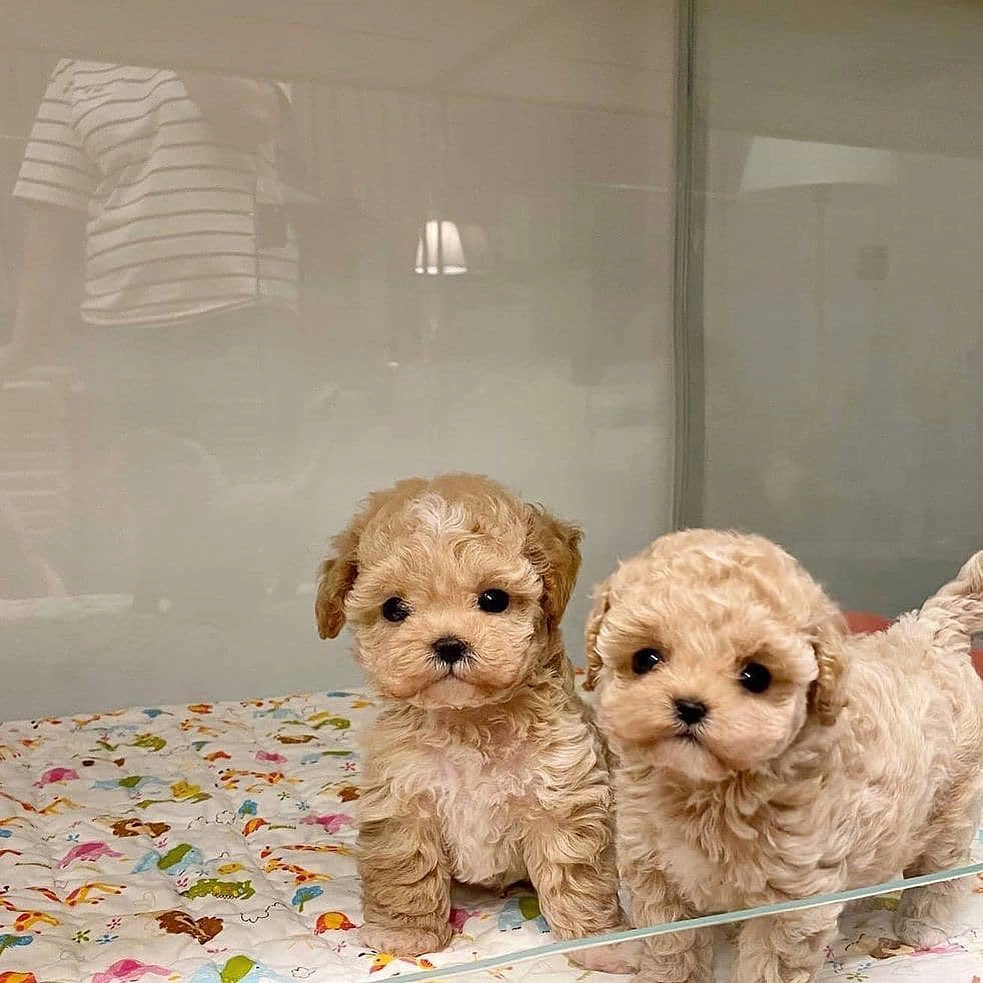
The Teacup version is a more recent development, driven largely by demand from people looking for ultra-small pets. However, it’s worth noting that major kennel clubs like the AKC (American Kennel Club) do not recognize the “Teacup” size, as it’s not a natural breed standard and is often associated with questionable breeding practices.
Size and Appearance
- Height: 6 to 8 inches
- Weight: 2 to 5 pounds (fully grown)
- Body Type: Compact and delicate bone structure
- Coat: Soft, curly, or wavy; low-shedding
- Colors: White, cream, apricot, black, gray, or a mix
Despite their tiny frame, Teacup Maltipoos have expressive eyes, fluffy coats, and a teddy-bear appearance that make them incredibly photogenic and charming.
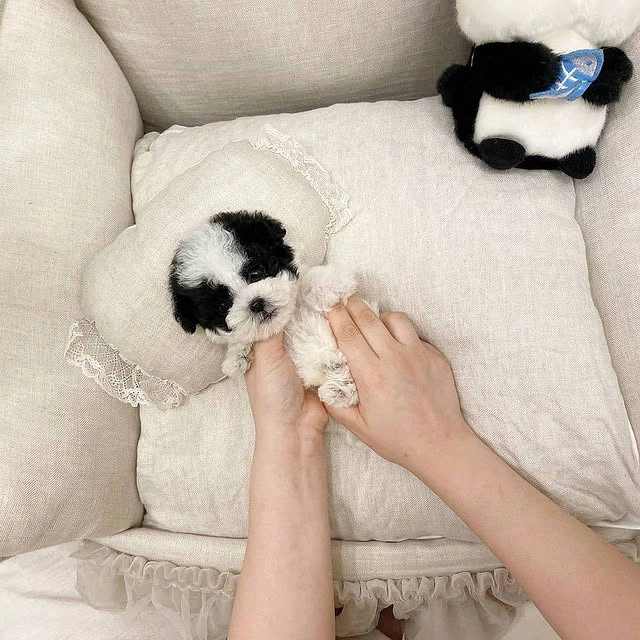
Personality and Temperament
Teacup Maltipoos are known for their:
- Affectionate nature: They form strong bonds and love constant attention.
- Intelligence: They’re fast learners, thanks to their Poodle lineage.
- Gentle behavior: They’re calm and cuddly when properly trained.
- Sociability: They tend to get along with people, kids, and other pets — but require supervision due to their size.
However, they can also develop issues like separation anxiety and clinginess if left alone for long periods.
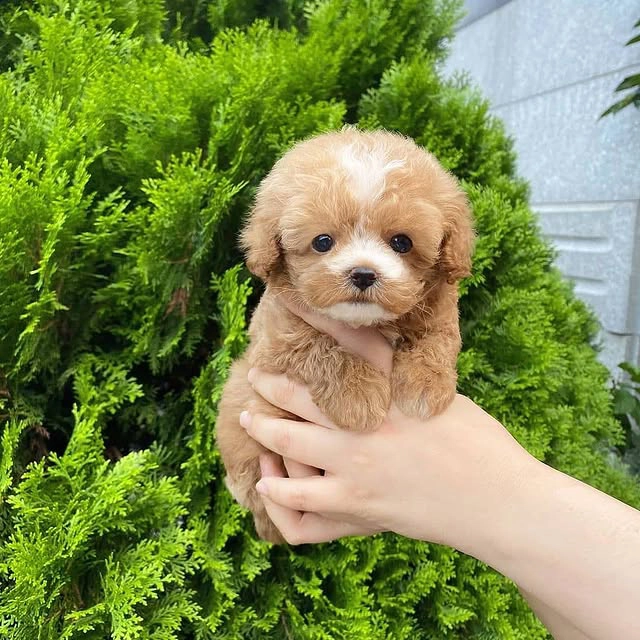
Ideal Living Environment
- Best suited for: Apartments, condos, or small homes
- Great companions for: Seniors, singles, couples, or families with older children
- Not suitable for: Homes with very young kids, large aggressive pets, or frequent rough handling
Their tiny size makes them fragile, and even a minor fall or bump can cause injury.
Grooming and Maintenance
Teacup Maltipoos require regular grooming to keep their coat clean, healthy, and free of tangles.
Grooming Needs:
- Brushing: 3–5 times per week
- Bathing: Every 3–4 weeks
- Haircuts: Every 6–8 weeks (professional grooming recommended)
- Ear cleaning: Weekly, to avoid infections
- Eye wiping: Daily, especially for light-colored coats
- Nail trimming: Monthly
Because their coat doesn’t shed much, it traps dirt and oil easily, requiring consistent care.
Training and Intelligence
Teacup Maltipoos are highly trainable due to their intelligence but require gentle methods and consistency.
Training Tips:
- Use positive reinforcement only (treats, praise)
- Start housebreaking early; small bladders mean frequent potty breaks
- Crate training is recommended for safety
- Begin socialization early to reduce shyness or nervousness
- Avoid physical punishment — these dogs are emotionally sensitive
With proper training, they can learn basic commands, tricks, and even potty pad use indoors.
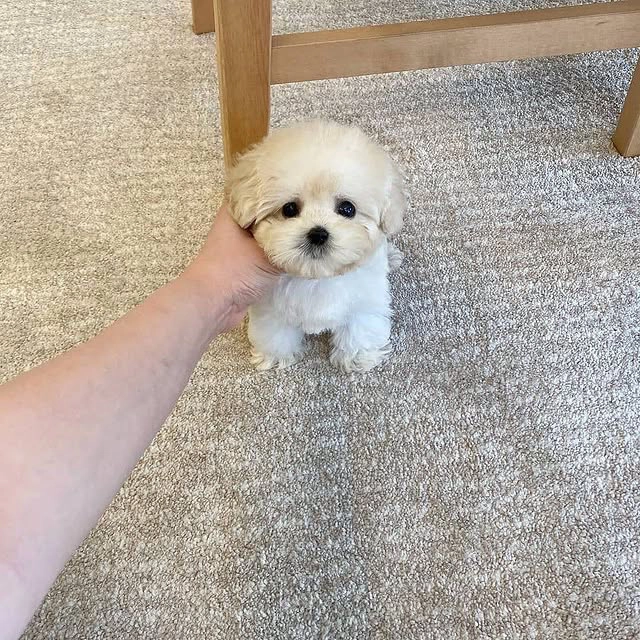
Diet and Feeding Guide
Teacup Maltipoos have fast metabolisms and small stomachs, so they need small but frequent meals.
Feeding Guidelines:
- Meals per day: 3 to 4 small meals
- Food type: Premium dry kibble or wet food designed for toy breeds
- Avoid: Foods with fillers, by-products, or artificial preservatives
They are prone to hypoglycemia, so skipping meals or overexertion without food can be dangerous. Always have a high-calorie supplement or emergency sugar source (like honey or Nutri-Cal) on hand.
Health Concerns and Lifespan
While Teacup Maltipoos can live up to 12–15 years, they face more health risks than standard-sized dogs.
Common Health Issues:
- Hypoglycemia (low blood sugar)
- Patellar luxation (knee dislocation)
- Tracheal collapse
- Heart murmurs
- Dental disease (due to tiny jaw size)
- Liver shunt
- Respiratory problems
Routine vet checkups, vaccinations, dental cleanings, and proper nutrition are essential to prolong lifespan and reduce risks.
Exercise Needs
Despite their small size, Teacup Maltipoos still need regular activity.
- Daily walk: 15 to 20 minutes
- Indoor play: Short games of fetch or tug
- Avoid high-impact activities like jumping or running on stairs
They can get tired quickly, so watch for signs of fatigue or low energy and allow plenty of rest.
Legal and Ethical Considerations
Teacup dogs are often criticized for being the result of irresponsible breeding. This includes:
- Breeding runts of litters over multiple generations
- Inbreeding to reduce size
- Focusing on appearance over health
Always check for:
- Health guarantees
- Parent medical history
- Clean, humane breeding conditions
Avoid buying from puppy mills or pet stores that cannot show proper documentation. If possible, consider adopting from a rescue specializing in small or designer breeds.
Cost of Owning a Teacup Maltipoo
Initial Expenses:
- Puppy cost: $1,500 – $4,000
- Supplies (bed, crate, leash, toys): $200 – $400
- Initial vet exam + vaccines: $100 – $300
Ongoing Monthly Costs:
- Food and treats: $30 – $60
- Grooming: $40 – $80
- Vet checkups: $100 – $300/year
- Pet insurance (optional): $20 – $40/month
Unexpected health issues can increase costs significantly, so budgeting is important.
Frequently Asked Questions (FAQs)
Final Thoughts
The Teacup Maltipoo is a charming, intelligent, and affectionate breed that brings joy to any home it enters. However, potential owners must understand that these dogs require dedicated care, frequent vet attention, and gentle handling due to their delicate structure.
They are best suited for individuals or families who have the time, patience, and resources to provide lifelong care. If you’re fully prepared, a Teacup Maltipoo can be a loyal and lovable companion for years to come.






